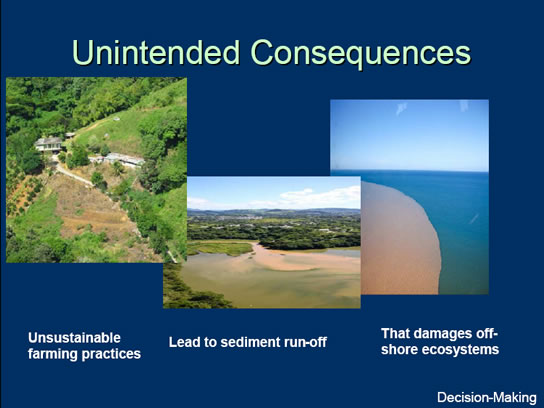Tutorials on Systems Thinking
Unintended Consequences

14 / 20
Sometimes, seemingly obvious decisions can have adverse unintended consequences. For example, we can improve agricultural productivity if we plow all suitable land, eradicate pests, and feed the plants. Yet, plowing to the edge of a stream, and applying pesticides and fertilizer to ensure rich, successful harvests will create some adverse unintended consequences.
These decisions can cause erosion from the farmland and allow sediments, contaminants, and nutrients to wash into the stream and pollute water downstream.
Ultimately, this destroys ecosystems that provide tourism, recreation, fishing and even the food and drinking water of downstream communities. Polluted water no longer provides the services we value. Moreover, the loss of topsoil into the stream requires even greater use of fertilizer on crops in ensuing years.
Decisions that incorporate the entire functioning ecosystem and connections among ecosystems will usually result in sustainable benefits. Practices in agriculture, construction, industry, and energy are all important contributors to our social and economic existence; however, they often produce unintended and unwanted outcomes. This challenges us to move from a traditional decision-making process to a more integrated systems-level decision-making process.
